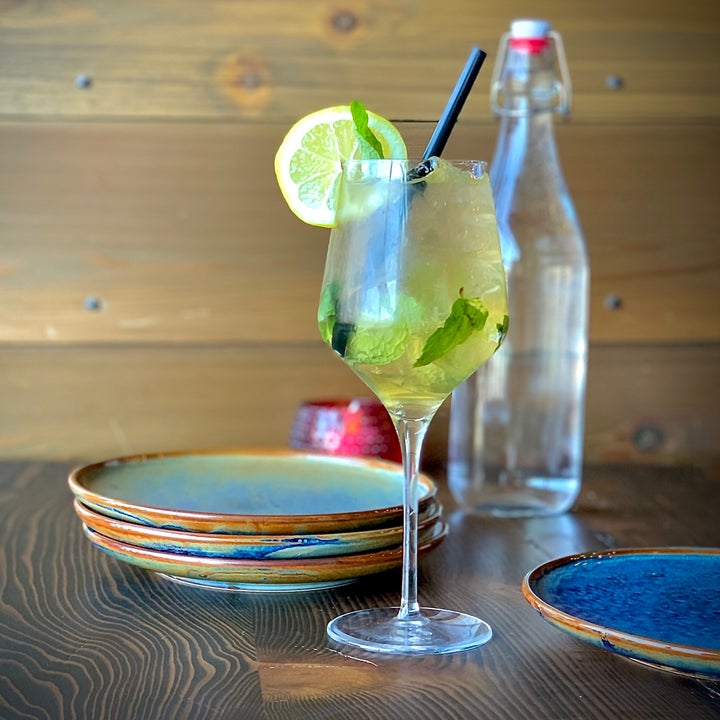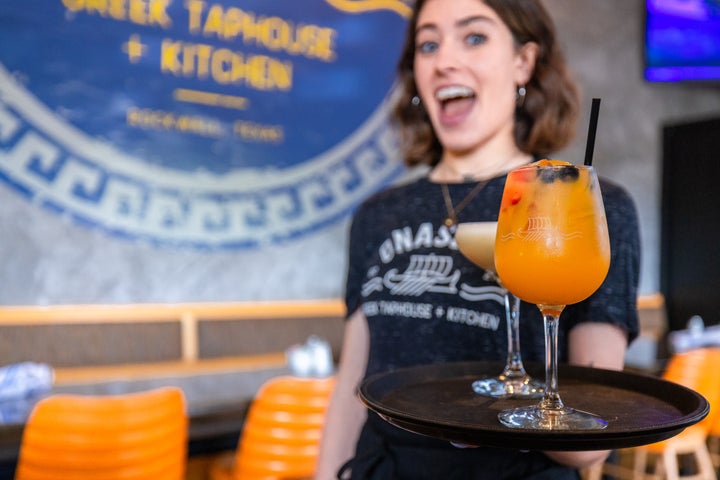
’Tis the season for sangria! This wine-based punch, which has been written about since 200 BC is beloved and for good reason. It’s fresh, fruity and incredibly versatile — the perfect pitcher drink for picnics and parties.
The Romans may have been the first to write about sangria, but it began to grow in popularity thanks to Spanish and Hispanic Amercianrestaurants that served it in the 1940s. It made an appearance at the 1964 World’s Fair and has come in and out of style since. Lucky for us, sangria is back and better than ever.
We’re diving into the punch bowl with mixologists and drinks professionals from around the world to learn all about how to craft the perfect sangria.
The anatomy of Sangria
The notion that sangria is just wine and fruit is false. It’s a mix of wine, spirits, sweetener, juice and fruit, and mixologists love it because it allows for limitless creativity.
Wine
All sangria starts with a bottle of wine. Experts agree the wine should be fruit-forward, acidic (makes your mouth water) and if it’s red, low in tannins. They also agree on something else: Stop using bad wine!
Evie Negri-Albert, better known as @drinksbyevie, gets it. “It’s a common misconception that you can [take] subpar wine, turn it into sangria and it’ll magically become better. It doesn’t work like that,” Negri-Albert said. She has tips for picking a wine. “Start with a quality wine that you know and love — this doesn’t equal expensive! There are so many wonderful wines in the $15-$30 (£12-£24) range that I love to use to set your sangria up for success,” she advised.
Red: Garnacha (what Grenache is called in Spain) is a favourite for red sangria. Stephen “Pip” Roffi, the mixologist at Village Garage Distillery in Bennington, Vermont, has developed a red sangria recipe that approaches the wine deliberately. “I usually use a Grenache or a Malbec,” Roffi said. For Malbec, he’s specific. “Definitely a Malbec from Argentina or Chile.”
Down the street, at a nanobrewery called Harvest Brewing, Sean Dunleavy makes his famous sangria with a Pinot Noir/Cabernet Blend. The low-tannin, high-acid Pinot Noir balances the bold cabernet.
Dunleavy sticks with his lauded red sangria but has thoughts on using sparkling wine. “I think I would do it with Prosecco. Something really bubbly ... I think that would be fun.”
Sparkling: If you do want to use a sparkling wine, it’s easy to find wines that fit the sangria formula, since most are tannin-free and high acid.
Rosé: And then, of course, you can always use rosé for a pink sangria. Reach for a bottle that meets Negri-Albert’s price point but tastes far more expensive.
White: White wine is the perfect base, with no tannins and refreshing acidity. At Bennington, Vermont’s The 421 Craft Bar & Kitchen, mixologists Desireé Hazen and Samantha Joy use Sauvignon Blanc. They create new sangrias seasonally and are considering Grüner Vltliner, a crisp, Austrian white wine known for its distinctive pear flavours.

Spirits
Booze provides structure while balancing sweetness in sangria. It also makes sangria last longer so you don’t have to finish the pitcher.
Traditional sangria uses brandy (a neutral grape spirit), but these days, mixologists are grabbing all sorts of high-alcohol ingredients.
At The 421 Craft Bar & Kitchen, Hazen and Joy use Tito’s Vodka in their current sangria offering. “It’s clean and smooth and doesn’t make it too boozy.”
The Village Garage uses 5-year aged Vermont whiskey with locally sourced, smoked maple syrup. And down in Rockwall, Texas, at Onassis Greek Taphouse + Kitchen, they’re taking white sangria in a new direction by using Stray Dog Gin.
Sangria is best when it’s complex, so don’t be afraid to play with bitters, liqueurs or infused vodka to raise the complexity.
Juice
Orange juice is the most popular fruit juice found in red sangria, but the creative mixologists at The 421 Craft Bar & Kitchen have changed this up completely.
Instead of juice, Hazen and Joy use tea. “We blend Sauvignon Blanc, Tito’s, peach tea, green tea, Metcalfe’s Peach Liqueur, honey, fresh mint and fresh lemons and serve it over ice garnished with lemon and orange slices,” Hazen said.

Sweetener
You could make simple syrup (by boiling equal parts water and sugar), but the options go far beyond this bar staple. Molasses, maple syrup and honey add depth of flavour to sangria. Another option is to make fruit syrups by heating and stirring two parts fruit juice and one part sugar until dissolved. If you want a sangria without fruit and seeds floating in it, this is the way to go.
The formula
Some restaurateurs, like Mark Soletina, managing partner at Chicago’s Ba-Ba-Reeba, like to keep it simple. “Wine plus brandy plus orange liqueur plus fruit; those are the basics of all of our sangrias,” Soletina said. “We try to keep it classic while also playing with seasonal fruit flavours. The classic red sangria is still our favourite, but the fresh fruit of the season is always the most popular with our guests!” Soletina said.
If you want to develop your own sangria, here’s the basic recipe to start with.
Fruit: 1-2 cups
Wine: 1 bottle
Bitters/liqueurs: 1/4-1/2 cup
Spirits: 1/4-1/2 cup
Juice: 1/4-1/2 cup
Sweetener: 1/8-1/4 cup
Go forth and slay
Experts are excited about sangria and now that you’re armed with a base recipe and great advice, you should be, too. Just start with that recipe and then mix and match flavours until you get it down. You’d be amazed what you come up with.
Sangria is delightful, even if you don’t include alcohol. If you want a booze-free Sangria, check out TÖST or Nozeco as a base.
Here’s a final tip – you can extend sangria season into winter. “During colder months, I love to use more citrus fruits, and fresh herbs like tarragon with a crisp white wine,” Negri-Albert said. That can be the base for your next pitcher drink – get to it!